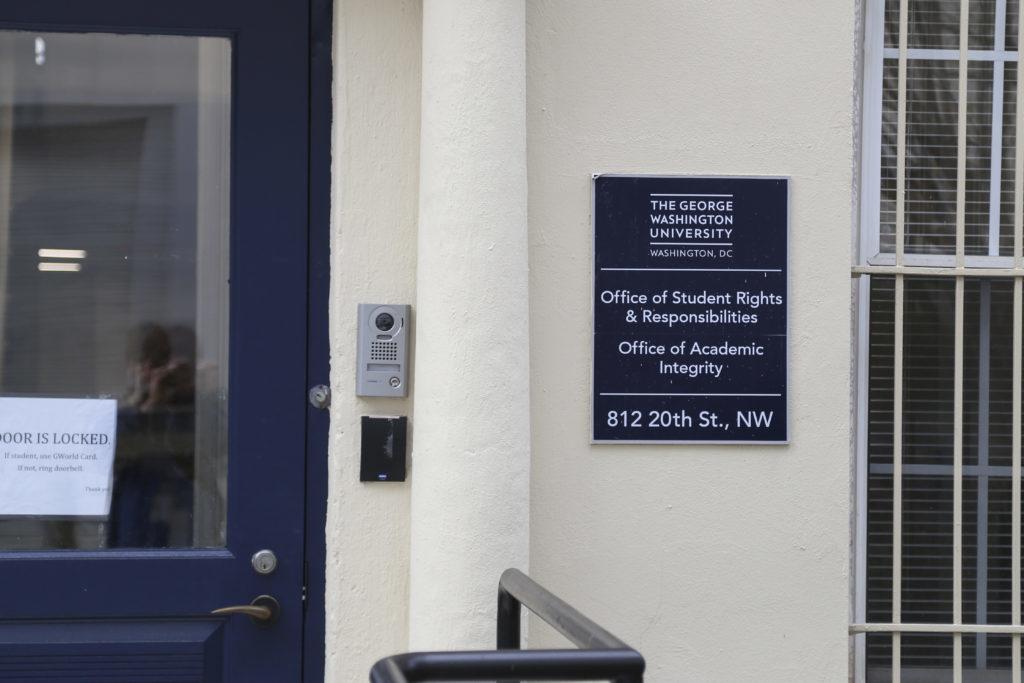As the University’s Title IX policies undergo an external review, experts said GW should consider changing its system for determining responsibility in a sexual assault case.
GW’s Title IX office uses a hearing board, allowing a group of students, faculty and staff to hear evidence and debate the outcome of a Title IX case, but experts said many universities have switched to an investigator model, which features a single trained expert communicating with all involved parties, collecting and evaluating evidence and reaching a decision about possible sanctions.
Experts said the single-investigator system is less emotionally taxing for all parties because it avoids a potentially traumatic trial-like hearing in front of a disciplinary board and allows an official, who is specifically equipped to handle cases of sexual harassment or sexual assault, to make decisions about punishments.
A hearing board model usually allows a board of three individuals, most often a student, faculty and staff member to decide responsibility after an investigator first examines the facts and evidence pertaining to the case. An investigator model allows one individual, most often a trained expert like a former police officer, to both launch an inquiry and dole out a punishment.
GW and three of its peer schools use a hearing board to resolve Title IX complaints. The 11 other peer schools use either a single investigator model or a hybrid model, which allows an investigator to make a preliminary decision on a case that is then forwarded to a hearing panel for a final judgement.
University spokeswoman Maralee Csellar said the University’s external review of its Title IX procedures – announced last summer – would include “examining the models” used to address Title IX complaints to “ensure that all investigations are conducted thoroughly, responsibly and fairly.”
Csellar said the review would examine practices at other universities and include interviews with students. She declined to say why GW uses a hearing board rather than an investigator model for cases pertaining to the Title IX office and whether or not they are considering switching models.
Flaws in hearing board model
GW requires that all Title IX cases go through a hearing panel comprised of between three and five students and “whenever possible” a faculty member or administrator if the punishment could result in a student’s suspension or expulsion, according to the student code of conduct.
Although a hearing board model often reduces potential bias in an investigation, experts say it can also be traumatizing for students moving through the case process who have to relay their experience to unfamiliar people.
Matthew Ornstein, the co-director of legal programs at Network for Victim Recovery of D.C., said a hearing board model presents a formal and unfamiliar courtroom-style proceeding that can be stressful for survivors.
“Going into the hearing panel is traumatic to both sides, it’s more or less putting on a faux trial,” Ornstein said. “There’s faux trial rules, and it sort of resembles a courtroom and it’s stressful.”
Meredith Smith, the assistant provost for Title IX and Clery Compliance at Tulane University, said Tulane’s Title IX office recently switched from a hearing board model to a single investigator model because they put too much stress on students and presented scheduling issues.
“You’re trying to coordinate seven or eight different people’s schedules to get a date. It was really difficult, and really hard on people,” she said.
Smith said a single investigator model is a better way to gather as much information on a case as possible, as one person is able to spend more time with the evidence and collect more information from the individual student.
Peer schools turn to single investigator model
A single investigator model gives one official the ability to decide the outcome of a Title IX case. Experts said this model gives one individual a great deal of power and creates potential bias because an investigator can become partial to a student they are working closely with on a case. But they said it also allows the best trained person to make the final decision.
This summer, GW hired a Title IX investigator, along with two other full-time staff members, for the Title IX office.
Daniel Swinton, the managing partner of the National Center for Higher Education Risk Management Group, a consulting firm that works with universities, said when there are fewer people involved, the reporting process is more comprehensible for the parties involved and has a clearer focus because parties in a case have one key contact point and don’t have to navigate the bureaucracy to get answers about a case.
“The investigator model, as long as the investigation is sufficiently robust, puts the decision-making in the hands of probably the most trained person and the person who is probably the most familiar with all of the evidence that’s been presented,” Swinton said.
Swinton said many schools have started to employ the “hybrid” model, where both an investigator and a hearing board are involved in the case, because it blends the best parts of the two models into one system.
“You still gain the benefits of the separation of decision making, it gives some kind of distance for the investigator from the actual decision, but places a recommendation in their hands because I think they are in the best position to make some kind of decision,” Swinton said.





